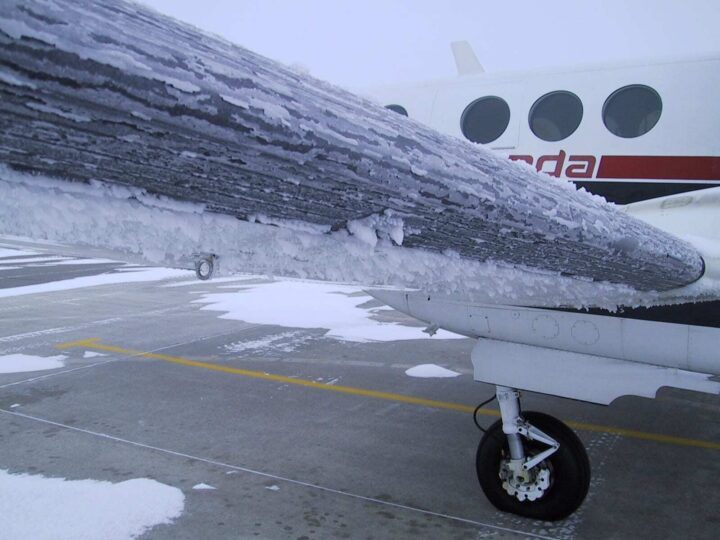The formation and accretion of unwanted ice around certain solids or bodies can cause the loss of aerodynamic performances or damage structures. The problem is even more difficult at high altitudes, in ranges where airplanes usually fly, and where the presence of liquid water in subcritical conditions is frequent. Under these conditions, the aircraft could lose its lift, causing the pilot to lose control. Further than this, the behaviour of ice on the structures to which it adheres directly depends on the size of the drop that characterizes the cloud.
Drop sizes above a certain threshold led to the appearance of a much more extended ice surface on the wing and are difficult to remove, for which current ice detection and removal systems are not effective. This has been the cause of some of the latest aviation accidents. Therefore, identification of this type of ice is needed in order to increase safety on an aircraft.
A system for detecting ice formation, identifying the drop size and differentiating the type of ice, has been developed.

The device is based on a set of fiber optic sensors such as Bragg gratings (FBGS) or long period gratings (LPG). Sensors show different thermal inertias which allow to isolate the exothermic process of water phase change and accurately detect ice formation on a surface. This technology is specifically adapted to supercooled water. This technology takes advantage of the multiple sensor insertions that the optical fiber can hold and discriminate, covering large areas of ice with a single fiber and detecting responses from each of the sensors. The proposed sensors are immune to electromagnetic interference (EMI).
Ice detector system surface.
1. Sensors from Sp to S5 are activated by typical icing conditions.
2. Sensors from S5 to S7 are activated only by a severe icing hazards with the occurrence of large supercooled droplets.
Tests have been conducted in different Icing Wind Tunnels (INTA and NRC Canada) under various icing conditions, proving the effectiveness of the prototypes with satisfactory results under realistic icing conditions. Flight tests will be performed in Q2 2023 which will raise the TRL of the invention to 6.
Benefits:
- Immediately identify the presence of ice on the surface of a body and the ice accretion rate.
- Capable of incorporating, in one fiber, a large number of sensors to cover the whole surface.
- Identification of different types of ice, linked to different levels of security.
- Economic device.
- Free of electromagnetic interference.
The represented institution is looking for a collaboration that leads to commercial exploitation of the presented invention.
Institution: National Institute for Aerospace Technology of Spain (INTA)
TRL: 4-5
Protection status: Patent Application
Contact: Laura Núñez / laura@viromii.com


